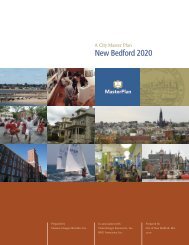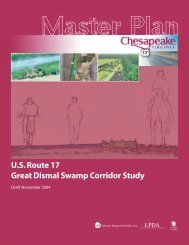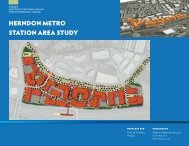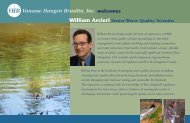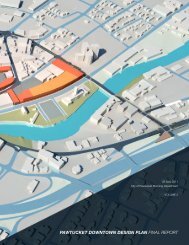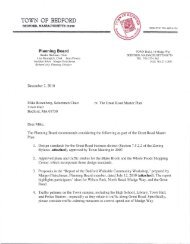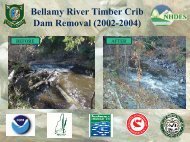Final Report - VHB.com
Final Report - VHB.com
Final Report - VHB.com
You also want an ePaper? Increase the reach of your titles
YUMPU automatically turns print PDFs into web optimized ePapers that Google loves.
‣ Encourage multimodal mobility through enhanced pedestrian and bicyclist<br />
ac<strong>com</strong>modations and through the support of public transportation.<br />
‣ Limit the need to continually increase roadway capacity by the<br />
implementation of aggressive TDM strategies and by the willingness to<br />
accept some level of traffic congestion on the roadway system.<br />
The range of multimodal transportation options considered in this Feasibility Study<br />
includes highway, rail, bicycle, and pedestrian options in Brunswick and Topsham.<br />
In addition, the Study examines the potential effect of travel demand on Study Area<br />
roadways associated with the implementation of various levels of Transportation<br />
Demand Management (TDM) measures.<br />
Given the expressed <strong>com</strong>mitment of the local <strong>com</strong>munities to a multimodal approach<br />
to addressing transportation needs in favor of solely relying on the continued<br />
construction of new and wider roadways, TDM actions are presented in this Study<br />
not as an either/or alternative but rather as actions that should be implemented as<br />
aggressively as possible – regardless of the implementation of other physical<br />
modifications to the roadway system.<br />
With regard to the interchange options that were evaluated to provide a direct<br />
connection between the NASB and US Route 1, the results - at a planning level -<br />
suggest that although each option does have impacts, the concept of constructing a<br />
new direct-connection interchange is feasible. However, the pursuit of this strategy<br />
would likely require the preparation of an Environmental Impact Statement or an<br />
Environmental Assessment as a provision of the National Environmental Policy Act<br />
(NEPA) of 1969. The NEPA study would examine the project options and impacts in<br />
greater detail and also entail additional in-depth public involvement. Given that this<br />
improved access is critical to the redevelopment of the NASB reaching its full<br />
potential, the general public support of this strategy voiced during the Feasibility<br />
Study, and the time needed to conduct such an in-depth study, the MaineDOT<br />
should consider pursuing this strategy as an early-action item. Project funding<br />
should be programmed prior to the initiation of the NEPA study.<br />
With regard to the strategies to improve mobility along the Coastal Connector,<br />
Pleasant Street, and Mill Street, consensus still must be reached on a fundamental<br />
question: whether the functional characteristics of these three principal arterials<br />
should be changed so as to encourage through traffic to use the Coastal Connector.<br />
This sentiment was voiced by many throughout the Feasibility Study’s publicparticipation<br />
process. If the decision is to encourage regional through traffic to use<br />
the Coastal Connector and as a result reclassify (i.e., downgrade) Pleasant Street and<br />
Mill Street, then options such as the widening of the Coastal Connector to a uniform<br />
four lanes and grade-separating the Route 196/Route 201 intersection should be<br />
pursued early, followed by the traffic-calming options considered for Pleasant Street.<br />
These options also may require NEPA action.<br />
.<br />
Conclusions 162



